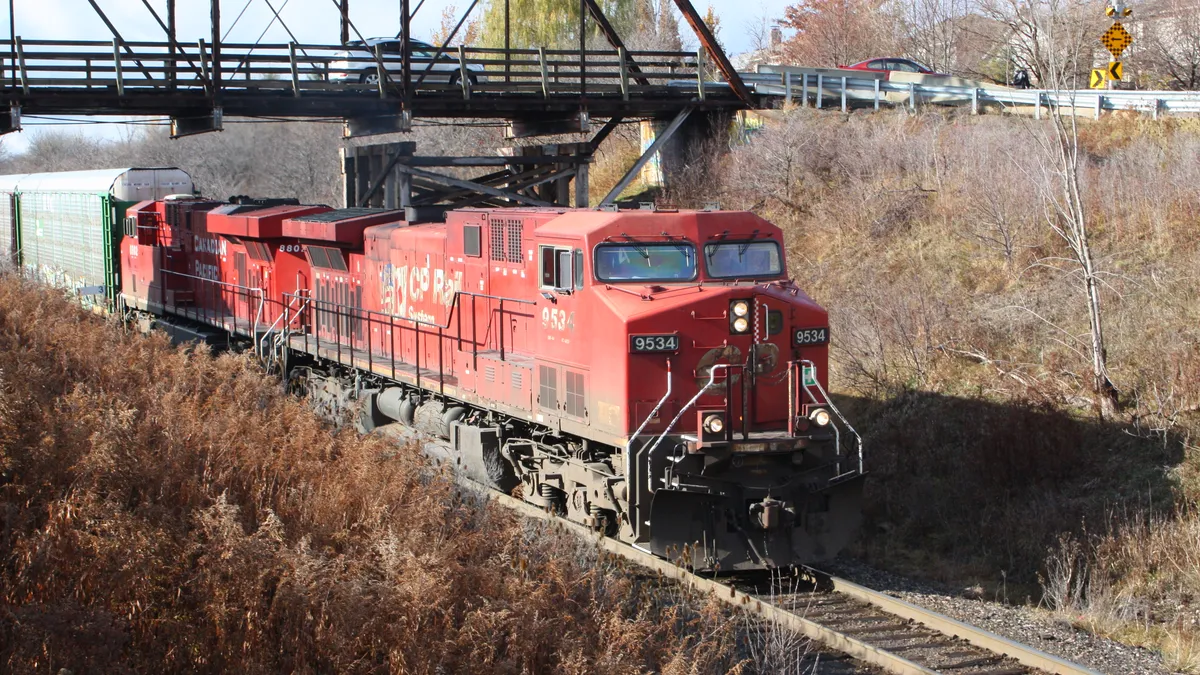Dive Brief:
- Union Pacific's decision to begin precision scheduled railroading this month marks a turning point for the industry: A majority of Class I railroads in North America now operate under this model.
- In a recent report, Moody's concludes the shift "may lead to service improvement." Railroads service levels lagged in 2017, due to high freight demand and weather effects. But those with precision railroading, such as CSX, have seen a marked improvement in train speed and lower dwell times.
- However, the model is not a "panacea for service improvements," according to Moody's. BNSF, which does not operate with precision scheduled railroading, has been able to maintain "service levels that to date exceed its average 2013 levels" — a year used as a benchmark for what "good service" metrics look like.
Dive Insight:
How, exactly, does precision scheduled railroading improve service? (If at all?)
That's a question the railroading industry has been struggling with for over 20 years, since the strategy was first implemented at Illinois Central. The operating model was then implemented at Canadian National and Canadian Pacific by its chief proponent, the late Hunter Harrison — who led each of those three railroads at one time.
There was one problem, though: Results were so closely seen as tied to Harrison's leadership, the model often became a backstory to the railroads' transformation. Even CSX's transformation over the past year was seen as a result of a controversial choice by the board to hire the late CEO.
Now, however, the story is changing — thanks in no small part to Union Pacific's embrace of the model. It's a test of how the changes are made, and whether the same effects can be reached through the model — not just the leadership decisions associated with it, such as lowering overhead costs by laying off employees.
Moody's analysis, published a week before the changes at Union Pacific began, provides an in-depth look at two service metrics associated with the changes:
- Velocity — Train speed is seen as an indicator of frequent train service and swift shipping times. Historically, Moody's writes, this falls in periods of high freight demand and inclement weather, as service is more frequently disrupted.
- Dwell time — The time during which a train is not moving at a terminal. This is seen as an indicator contributing to on-time arrivals and departures, as well as an overall indicator of the efficiency of a train operation. (If the train is held up, something did not go according to plan.)
In summarizing the model, Moody's explains other associated changes include an increase in train length, converting more trains to "manifest" (or general purpose) services, and boosting handling efficiency at train yards. The basic theory, as Harrison once explained, is that each car — not each train — should have a plan to follow.
This theory, however, also leads to a shift in service routes for shippers.
"Nonetheless, the model's train schedule is established with the primary objective to enhance the efficiency of railroad operations," the report reads. "This narrows the scope to accommodate customer needs and may cause customers having to adapt to the railroad's train schedule."
In fact, this was one of the biggest critiques made at a Surface Transportation Board hearing last year, months after CSX began its own switch. Shippers complained the model raised efficiency at the expense of service.
"If I don’t accomplish anything else today, I want to apologize to our valued shippers," Harrison said at the time. "Whatever problems we had, we had internally. We've made some mistakes. This is not a failure of precision scheduled railroading."














